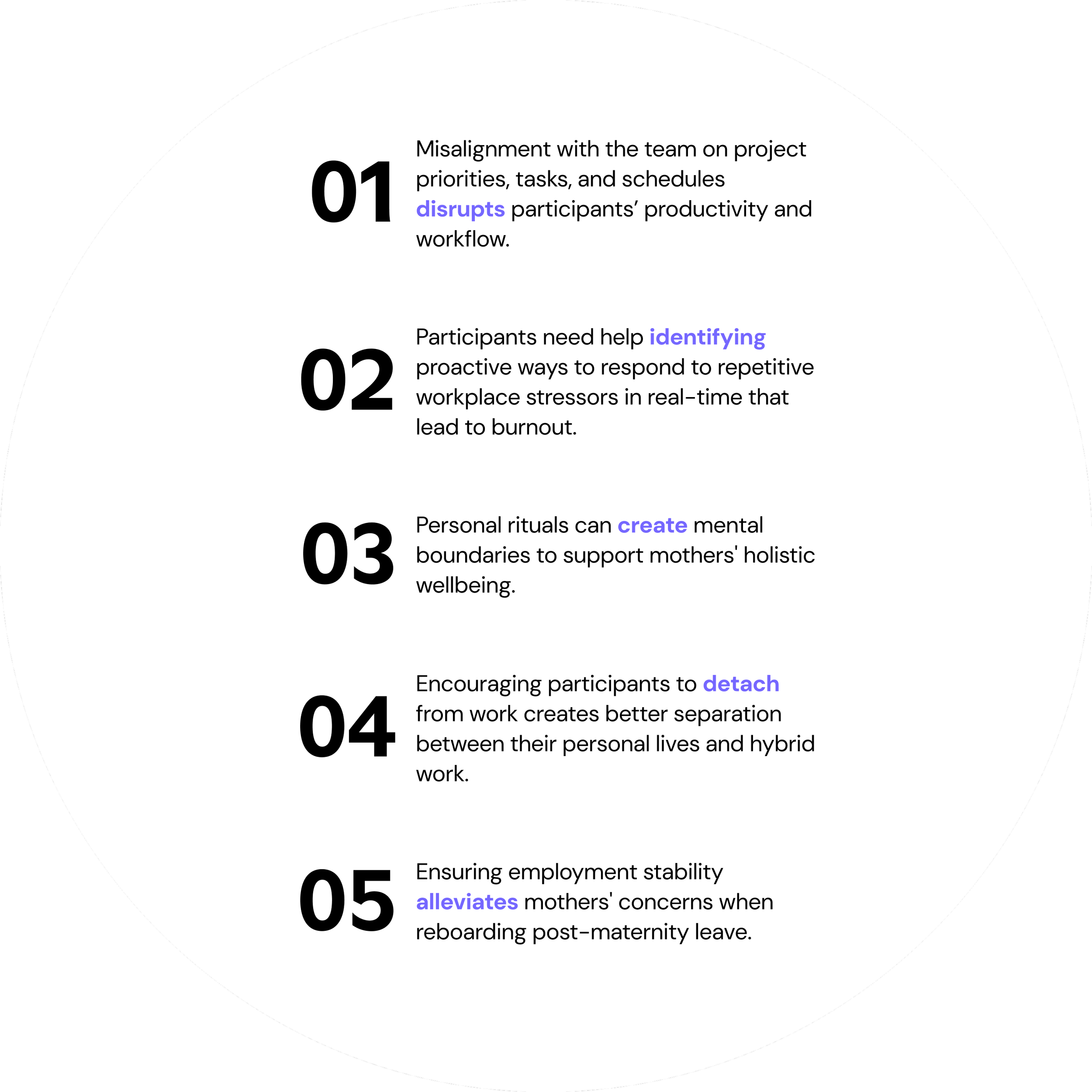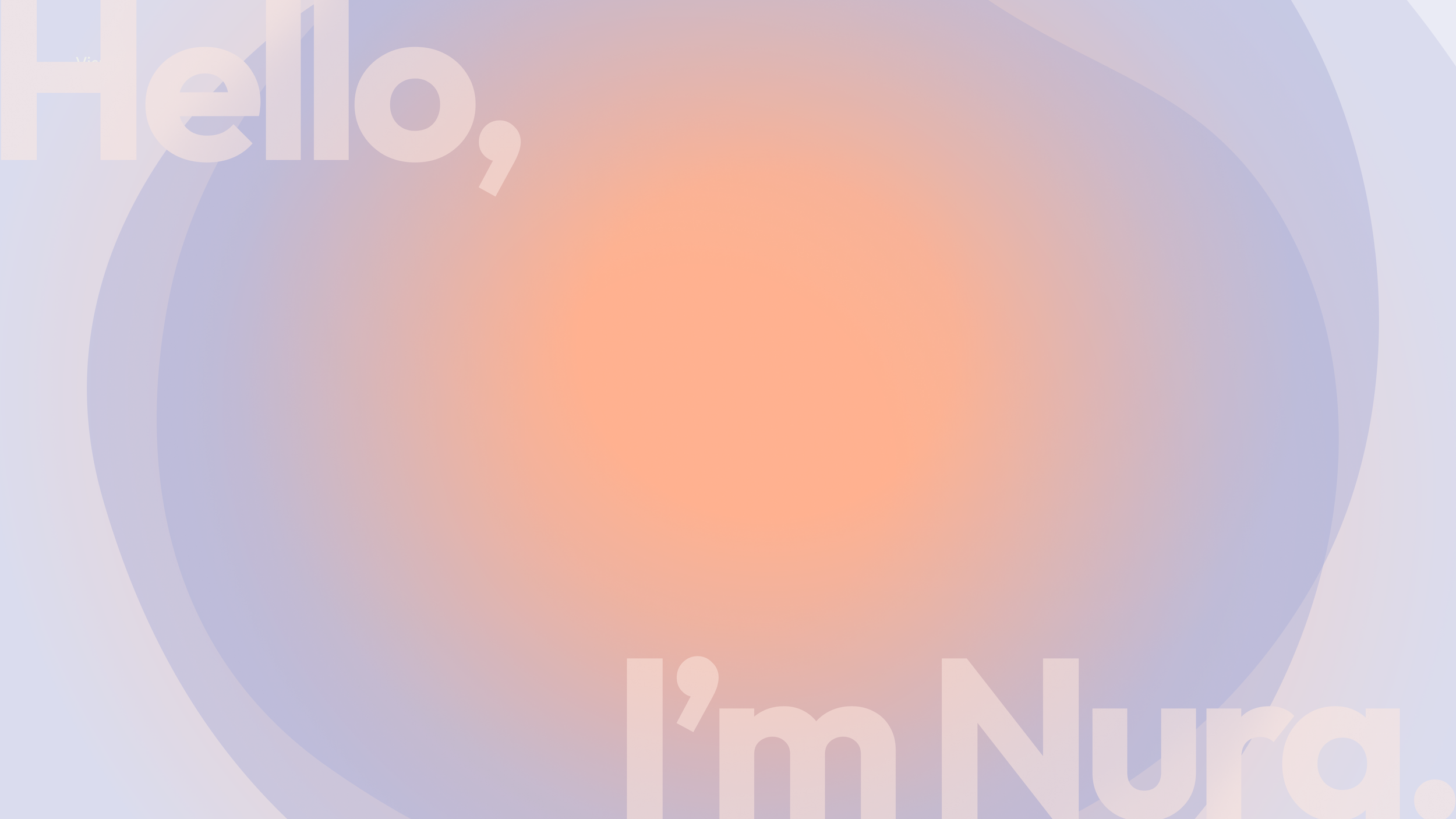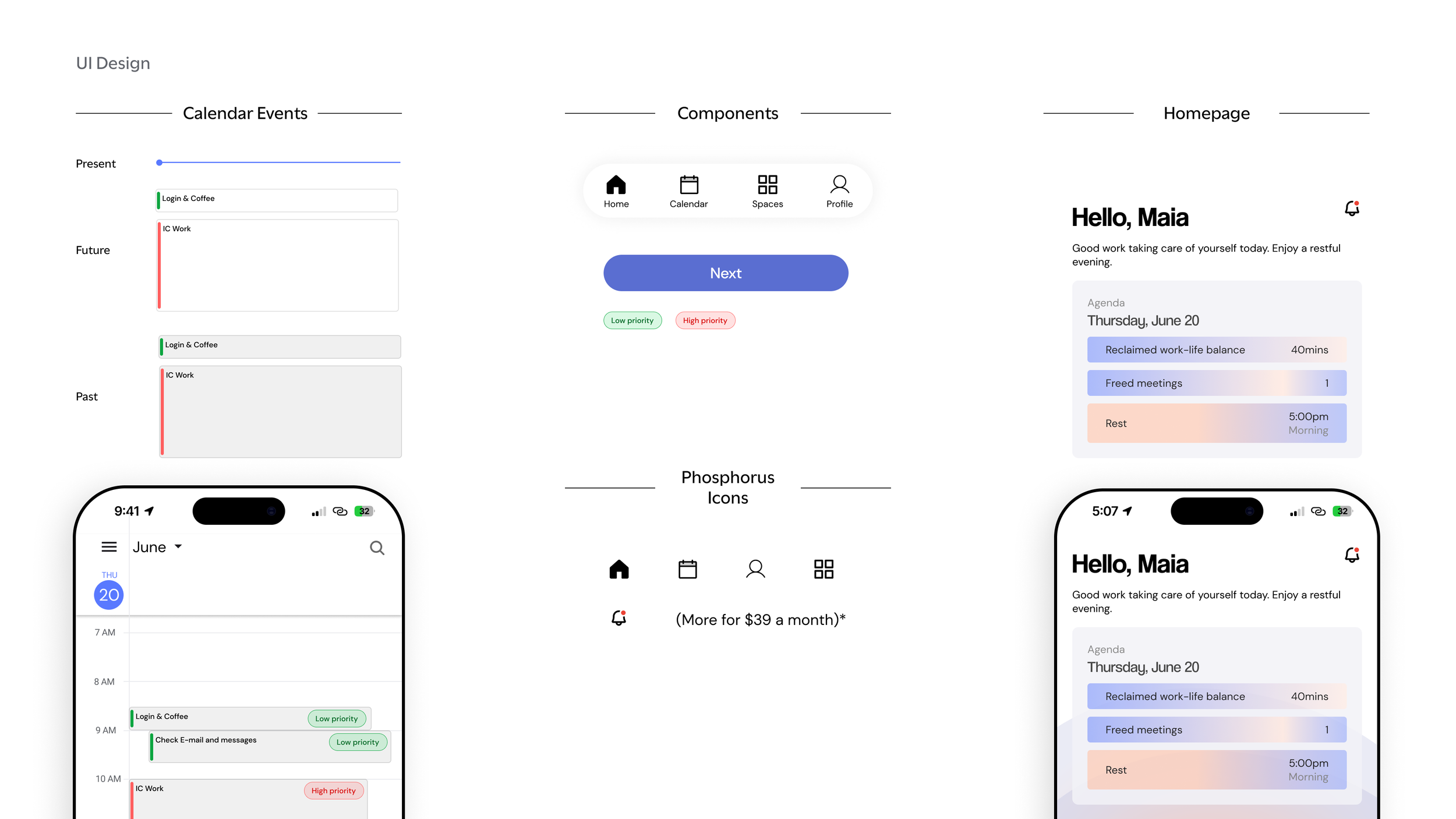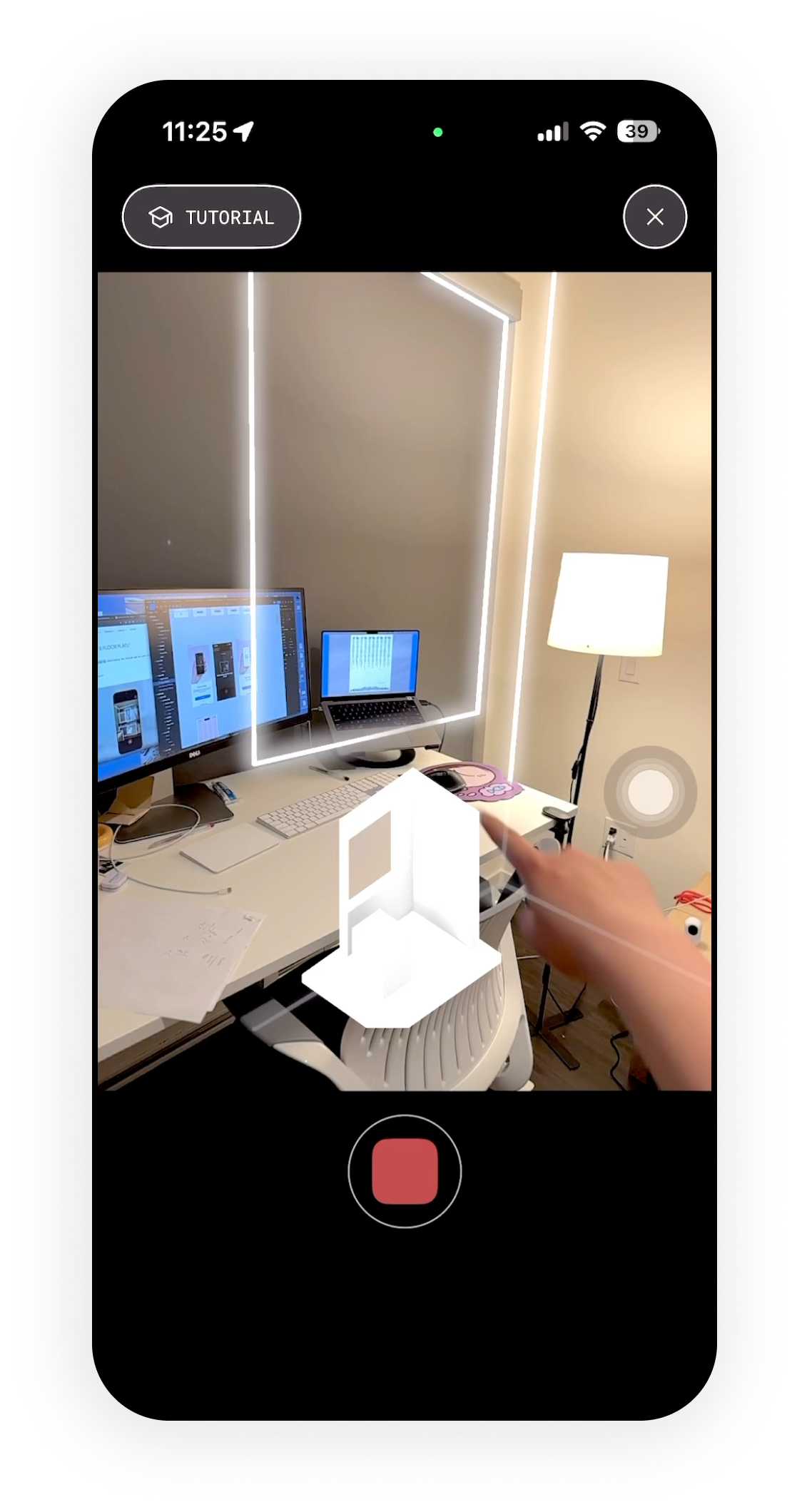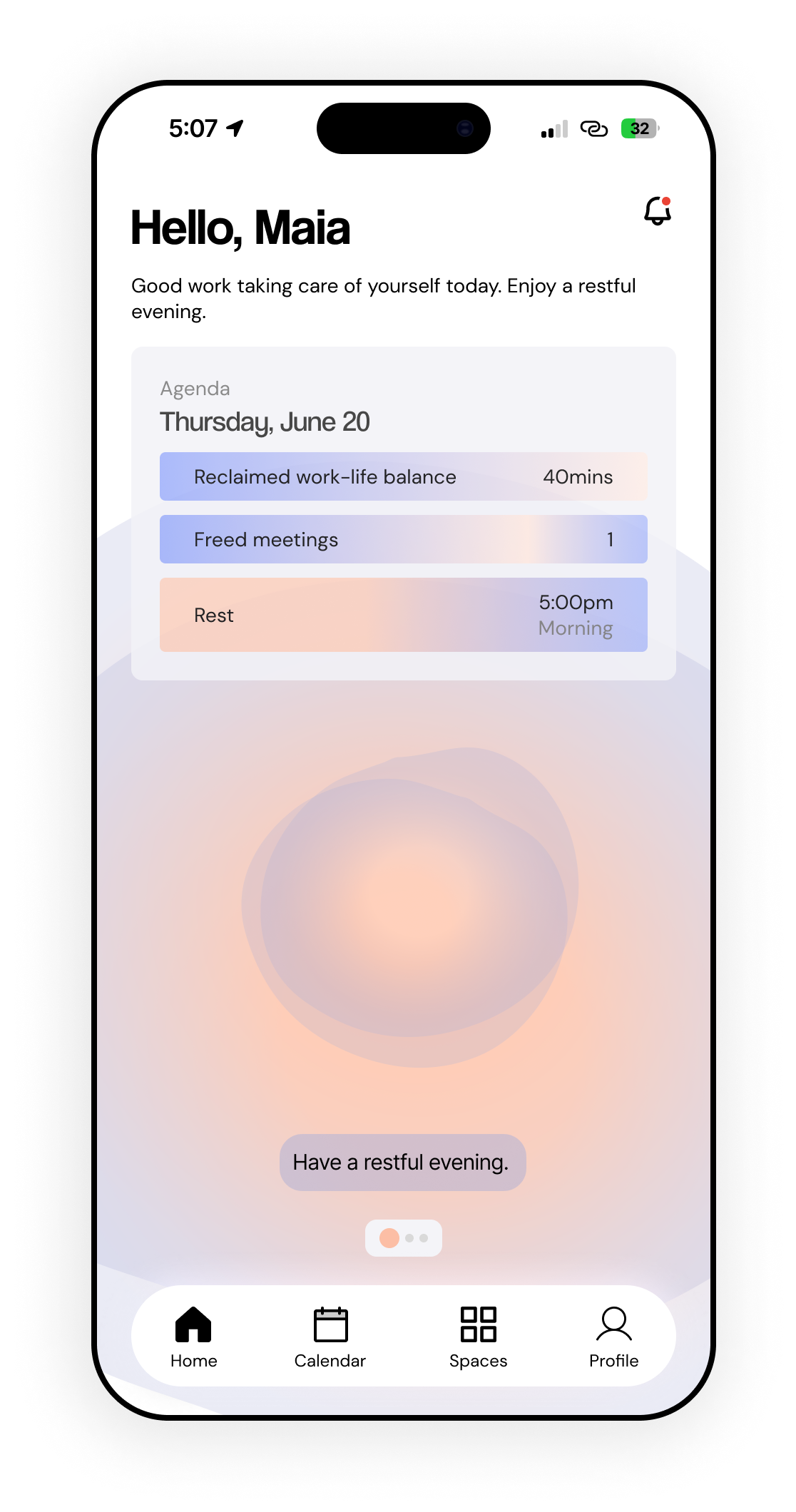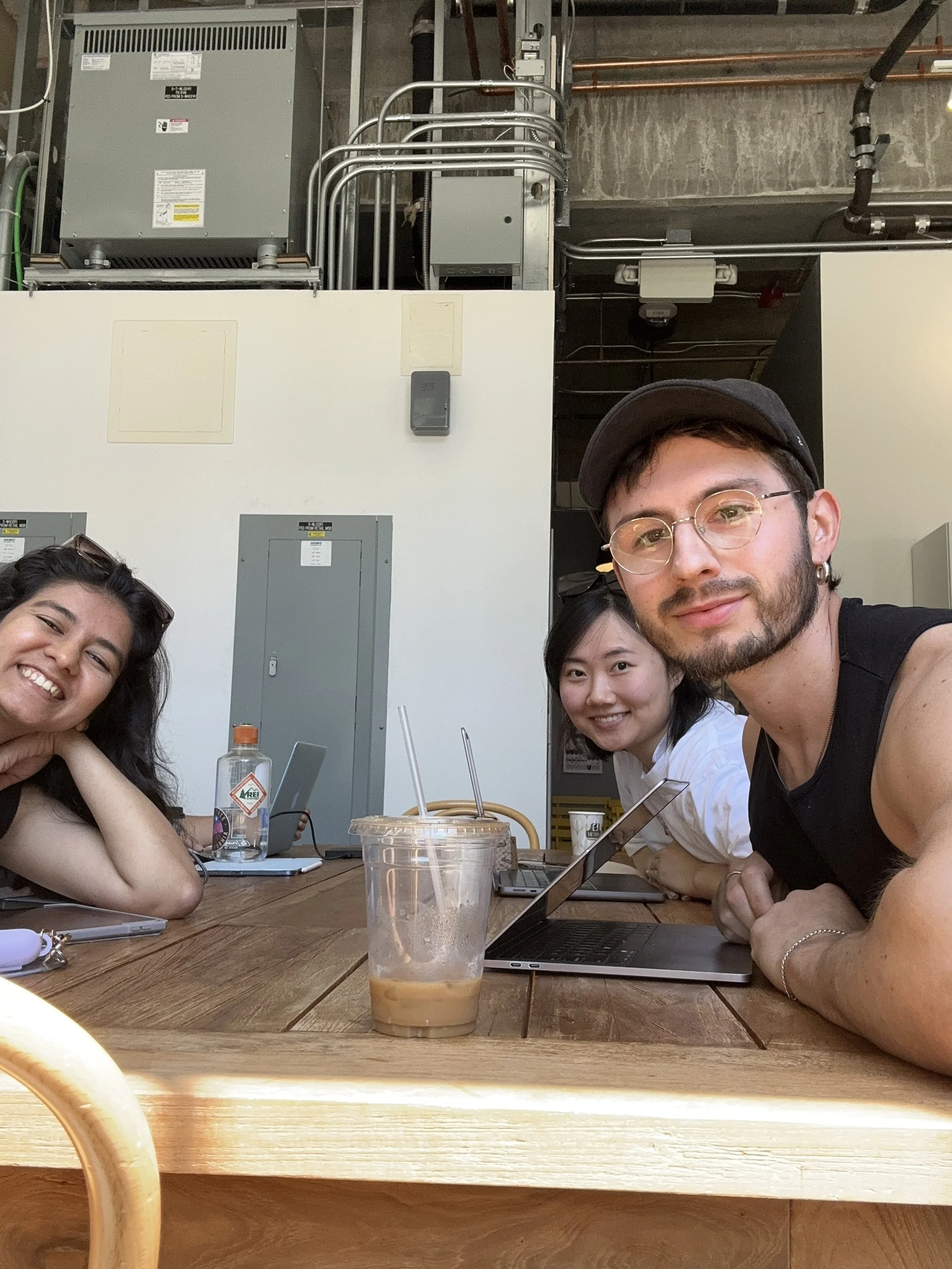
An AI assistant who protects remote-working parents’ time and space to nurture their well-being.
Team
Roman Meza
Charlotte Wang
Manjiri Dehankar
Auzeen Rahgoshay
Project
MHCI+D
Capstone Project
University of Washington
Timeline
8 months
January — August 2024
Advised by Google
Vijay Farmah
Sarah Outhwaite
Nura is an AI assistant that protects remote-working parents’ time and space to nurture their well-being.
Nurturing Parents
Nura integrates with smart devices to ease communication and enrich user connection.
Multimodal Interaction
Nura considers moods, schedules, and unexpected events to automate breaks, mitigate stress, and optimize workload.
Adaptive Calendar
Parents carve out virtual care clouds through geolocation and lidar technology to shield against work-related distractions at home.
Virtual Care Clouds
Nura highlights areas of improvement and personal success to build parents’ confidence in using tools that mitigate burnout and improve their lives.
Well-being Dashboard
Our impact
While we didn’t ship Nura, five concept evaluations clarified our project’s direction. Parents were keen on integrating their current workflow data — e.g. from Asana, Calendar, etc. — into Nura to optimize her intuition in opening up space and time at appropriate times. They wanted assurance that they wouldn’t have to manually add data. This yielded concerns aroudn privacy and permissions that would require further research.
Additionally, I created a Nura brand ethos through prototyping to produce brand cohesion across the arc of the user journey, including using an AI voice generator to intimate Nura, generating visual and graphic designs, and spearheading cinematography.
Why burnout?
Over 8 months, my team probed two primary questions to situate and respond to burnout experiences.
We shared common experiences of our rigorous post-graduate program alongside the palpable anxiety surrounding mass layoffs in the tech industry.
As students and growing practitioners in the field, we felt responsible to make an impact by mitigating burnout and cultivating well-being.
Primary Research: How does the environment of big tech firms influence experiences of burnout for mothers with children aged 6 - 12 who are balancing both work and maternal responsibilities?
Ideation: How might we support remote working parents in establishing healthy boundaries between work and personal life to prioritize their well-being?
How we defined burnout
According to the World Health Organization (WHO), burnout is a syndrome caused by consistent stress that manifests in three primary symptoms over time.
Context and Strategic Direction
After reviewing 40+ articles and academic papers, we honed primary research in on working mothers with children aged 6-12.
Desk Research Findings
In one 2022 survey of 30,000 tech workers, 46% of women expressed a high risk of burnout compared to 38.2% of men.
Working mothers are 23% more likely to experience burnout than working fathers.
Working mothers often struggle with the competing roles they play at work and home, feeling the tug of family more acutely than working fathers.
Mothers of young school age children (6-12) experienced the steepest declines in employment rates in April 2020.
From 12 semi-structured interviews with mothers working in large tech organizations, we gleaned 5 key insights.
From Insights to Design Direction
Organizations and company culture pose profound implications for design intervention. They require paradigmatic policy shifts that can take years to transform, whether through employee mobilization or broader legislation. These proved beyond the scope of our capstone project.
We instead focused on the points in mothers’ working life that would mitigate burnout and bolster their well-being. In particular, we focused on Insights 1, 3, and 4 — especially when considering the powerful effects that rituals and boundaries enact when mindfully balancing working and living.
Ideation using Design Principles
01 — Manage Burnout
Provide effective methods for caregivers to proactively manage and mitigate burnout, fostering long-term well-being.
02 — Facilitate Work-life Separation
Help separate work duties from personal life to reduce stress.
03 — Offer Personalized Solutions
Provide customizable features tailored to individual needs.
04 — Center Mothers
Address the unique challenges mothers face with targeted interventions.
05 — Maintain Neutrality
Develop solutions that empower individuals without relying on or conflicting with company policies.
After several rounds of ideation, we calibrated concepts to encompass caregivers. While our research focused on working mothers, our ideation demonstrated that their experiences of burnout at work are shared among other caregivers. This shift allowed us to expand Nura’s nurturing capabilities to help more people.
Visual Design
Nura’s visual and UI Design originates from an abstract artifact that represents the AI Assistant. Undulating and amorphous, Nura embodies refinement, beauty, and an orientation toward the future.
Interaction Flow – Geospacing
The geofencing feature allows users to create virtual spaces for taking breaks during "Nura Time"—a system-suggested period when notifications are muted, giving users time to focus on their well-being. Utilizing iPhone's Light Detection and Ranging (LiDAR) technology, geofencing measures objects remotely to create a 3D floor plan of the home using pulsed laser light.
Interaction Flow – Calendar Modulation
Based on the user’s integrated work calendar and geofenced spaces, Nura modulates schedules based on unexpected shifts during the idea. In this flow, the protagonist of our project of our user journey, Maia, responds to Nura’s prompts to shift a low-priority schedule based on shifting breaks and events.
Interaction Flow – Homepage
Nura visualizes parents’ holistic growth in a well-being dashboard. By synthesizing data around care clouds (geofenced areas) and insights generation usage, Nura highlights both areas of improvement and personal success. Parents build confidence in using the tools that alleviate burnout and improve their lives.
Lessons & Impact
Nura tests the ethical boundaries surrounding AI. What privacy concerns should we consider when AI modulates time and space for us? It also provokes aesthetic questions around multimodality — what is the logic flow for multi-modal interaction when users engage with an AI assistant?
Heady questions sparked conversations that informed my team’s design response. I’m eager to continue to expand our understanding of AI and its meaningful integration into everyday living.
Next Steps
My team would conduct (1) concept testing and (2) usability testing to determine Nura’s desirability and accessibility. We would also further probe the technical constraints behind networked geofencing and leveraging LiDAR technology to solidify their feasibility. Lastly, we would deepen and enumerate Nura’s efficacy and functionality as an administrator between the caregiver and their daily needs.
One final note: we recognized that Nura could help people beyond caregivers, as burnout is a syndrome that extends to all people in difficult jobs. We’d be curious to explore how Nura would play out for other workers.
Manjiri, Charlotte, and me sipping and discussing at Victrola in South Lake Union. Perfect for conversation and deep work.






